Olives are delectable to look at and delicious to eat. Whatever the color or the preparation, they can be counted on as crowd pleasers. One reason is their versatility in carrying out their culinary role in an exciting range of edible ways:
* Desirable garnish;
* Exotic Turkish cake;
* Fresh appetizer or snack;
* Healthy oil;
* Hot soup;
* Mixed or vegetable casserole;
* Scrumptious salad.

Salad With Olives, Tomatoes, Capers, and Bell Peppers on Pasta
As appetizer, complete meal, or snack, salads may include more than fruit or veggies. Featured recipe serves bell peppers, capers, Kalamata olives and tomatoes on angel hair pasta.
Kalamata (Καλαμάτα, Kalamáta) olives are among the most popular of olives. Its name is thought to mean “beautiful eyes”: καλά, kala, “beautiful” + μάτια, matia, “eyes.” Etymologists, historians and researchers suggest that the phrase may memorialize Our Lady Mary (September 8, 1st century B.C.E. – August 15, 1st century C.E.) of the beautiful, brave, compassionate, wise eyes.
The phrase also may honor the survival of an icon of her. It was located in a church that experienced a particularly destructive fire. Despite the overall devastation, the icon was unharmed other than with minimal burning.
The phrase became the name of an historic city in the southern Peloponnese (Πελοπόννησος, Pelopónnisos) of Greece. The Peloponnese is an anciently developed area of southern Greece that is to the south of the Gulf of Corinth (Κορινθιακός Kόλπος, Korinthiakόs Kόlpos). It numbers among its cities those of ancient Greek history and mythology such as Argos (Ἄργος, Árgos), Corinth (Κόρινθος, Kórinthos) and Sparta (Σπάρτη, Spartē).
The name of the olive, the icon and the city overlap because of geography. Specifically, the Kalamata olive is cultivated in the fields outside of the city of the same name. The cultivation therefore takes place in the Messenia (Μεσσηνία, Messinia) region of the Peloponnese. It also takes place in Laconia (Λακωνία), Messenia’s neighbor to the west.
The love for the olive accompanied Greek settlers of the Italian peninsula and islands.
Hidden among pines above Kalamata, ruins of castle, built in 1208 by Geoffrey I of Villehardouin (c. 1169–c. 1229), French knight of 4th Crusade (1202-1204), 2nd Prince of Achaea (Peloponnese)(1209/1210–c. 1229); also site of Homeric city of Pharai.
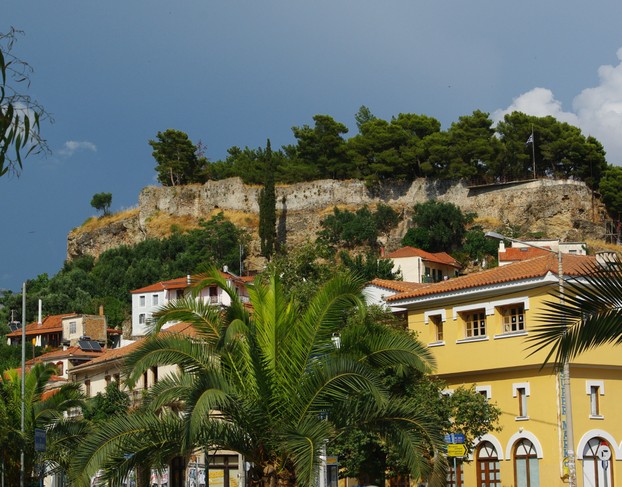 Kalamata's hill, the Peloponnese's westernmost point, overlooks city and Messenian Gulf of Ionian Sea. |
Ingredients: for salad dressing
1/3 cup extra virgin olive oil
2 garlic cloves, minced
Ingredients: for salad
1/2 pound angel hair pasta
- Note: Sometimes I substitute other pastas such as fusilli, rotini, or tagliatelle.
1/4 cup balsamic vinegar
1 Tablespoon fresh flat-leaf parsley, minced
- Note: 2 parsley sprigs = 1 tablespoon
1/2 teaspoon freshly ground black pepper
1/4 cup extra virgin olive oil
3 large tomatoes, cored, seeded, and diced
- Note: I set aside the core and seeds for addition to puréed stews.
1 bell pepper (green, red, orange or yellow), chopped
4 ounces fresh mozzarella, cut into bite-sized cubes
- Note: Buffalo mozzarella is a superb choice for this salad.
1/2 cup pitted and chopped Kalamata olives
1/2 red onion, finely chopped
6 fresh basil leaves, cut or torn into pieces
- Note: Sometimes I substitute arugula for basil; I also like to include argula flowers, which are wonderfully edible.
2 Tablespoons drained capers
Instructions
For salad dressing:
In a bowl, whisk olive oil and garlic together.
For salad:
1. While water is boiling, break strands of angel hair pasta in half. Place pasta into boiling water and cook until al dente, about 7 minutes.
2. While pasta is cooking, prepare remaining salad ingredients.
- In a bowl, whisk balsamic vinegar and black pepper together.
- While whisking, gradually add olive oil.
- In a large bowl, combine parsley, tomatoes, bell pepper, mozzarella, Kalamata olives, red onion, basil, and capers.
- Add balsamic vinegar mixture to salad ingredients.
3. When pasta has finished cooking, drain into a colander and allow to sit briefly, for a few minutes, to cool slightly.
- Note: I use a colander-pot set to reserve the pasta water, which is added to stews or is saved for watering house or garden plants, which thrive.
4. Add pasta to salad ingredients and toss lightly.
- Then gently drizzle salad dressing over salad ingredients. Toss lightly.
Acknowledgment
My special thanks to talented artists and photographers/concerned organizations who make their fine images available on the internet.
My special thanks also to Teresa Giudice for generously sharing culinary treasures and family anecdotes in her beautiful cookbook, Skinny Italian.
My recipe is a variation of a classic recipe, "Panzanella Salad," presented by Teresa Giudice on pages 214-215 of her excellent Italian cook book, Skinny Italian.
Image Credits
Kalamata olives: Michael Fielitz, CC BY SA 2.0, via Wikimedia Commons @ https://commons.wikimedia.org/wiki/File:Kalamataolives.jpg
Kalamata olives at Gargarou Retreat, 3.7 miles (6 km) north of Koroni and 28 miles (45 km) southwest of Kalamata: Kat Sommers (katsommers), CC BY-SA 2.0, via Flickr @ https://www.flickr.com/photos/18651845@N00/8156870215/
Kalamata's hill, the Peloponnese's westernmost point, overlooks city and Messenian Gulf of Ionian Sea: Koppi2, GFDL 1.2, via Wikimedia Commons @ https://commons.wikimedia.org/wiki/File:Kalamata_Burg.jpg
basil in Corley, North Warwickshire, west central England: Amanda Slater (amandabhslater), CC BY-SA 2.0, via Flickr @ http://www.flickr.com/photos/pikerslanefarm/2650630412/
caper bush's (Capparis spinosa) edible flower buds and leaves at Shio-Mgvime Monastery, Republic of Georgia: Lazaregagnidze, CC BY SA 3.0, via Wikimedia Commons @ https://commons.wikimedia.org/wiki/File:https://commons.wikimedia.org/wiki/File:კაპარი_Capparis_spinosa_Kapernstrauch.JPG_Capparis_spinosa_Kapernstrauch.JPG
Pasta-pleasers arugula and tomatoes naturally complement tagliatelle: Lablascovegmenu, CC BY 2.0, via Flickr @ https://www.flickr.com/photos/lablasco/5039910111/
four of many colors of salad-pleasing bell peppers: Airman 1st Class Levin Boland/U.S. Air Force, Public Domain, via Wikimedia Commons @ https://commons.wikimedia.org/wiki/File:Washing_bell_peppers.jpg
Sources Consulted
Accademia Italiana della Cucina (The Italian Academy of Cuisine). La cucina: the regional cooking of Italy. Translated by Jay Hyams. New York : Rizzoli, 2009.
Bechtel, Kathy. "Aceto Balsamico Tradizionale -- The Real Deal Balsamic Vinegar." chefbikeski.com. April 17, 2018.
- Available @ https://www.chefbikeski.com/aceto-balsamico-tradizionale-the-real-deal-balsamic-vinegar/
Castelvetro, Giacomo. The Fruit, Herbs and Vegetables of Italy (1614). Translated and introduced by Gillian Riley. Devon, England: Prospect Books, 2012.
Giudice, Teresa, with Heather Maclean. Skinny Italian. New York: Hyperion, 2010.
Riley, Gillian. The Oxford Companion to Italian Food. Oxford; New York: Oxford University Press, 2007.
Skinny Italian: Eat It and Enjoy It - Live La Bella Vita and Look Great, Too! ~ Available via Amazon
Italian recipes by Teresa Giudice with Heather Maclean
 |
| Italian cookbooks |
You might also like
Italian Bread With Plum Tomatoes: The Joy of BruschettaItalian bread can be eaten in bite-sized chunks or politely cut slices. Eithe...
Fennel Salad With Goat's Cheese, Butter or Red Leaf Lettuce, O...Fennel is a flavorful herb. It is particularly nutritious and healthy in sala...
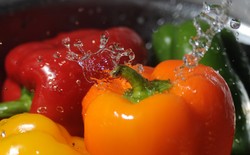

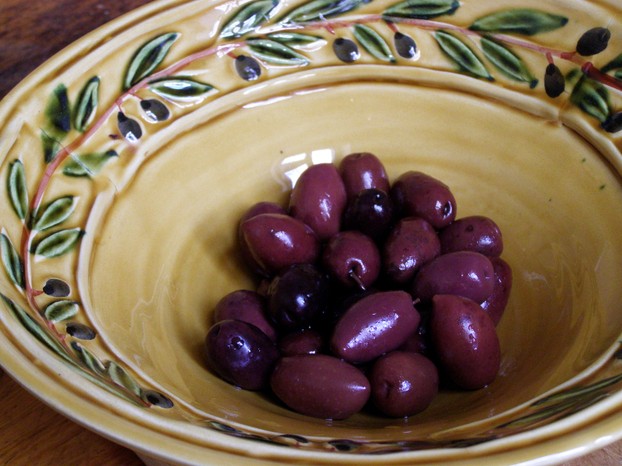
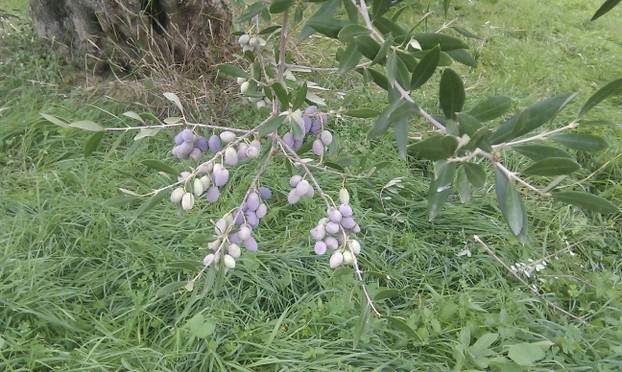
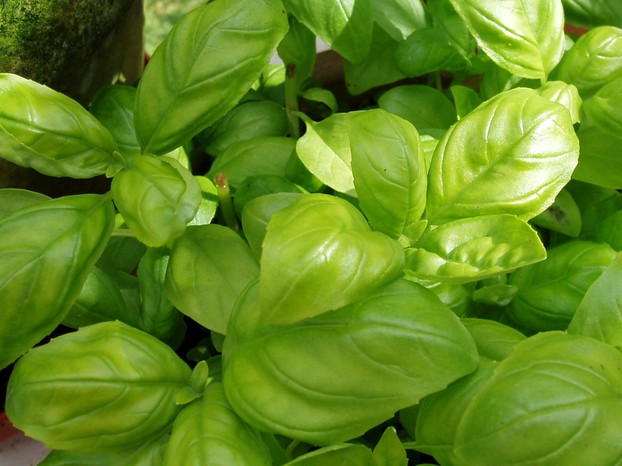
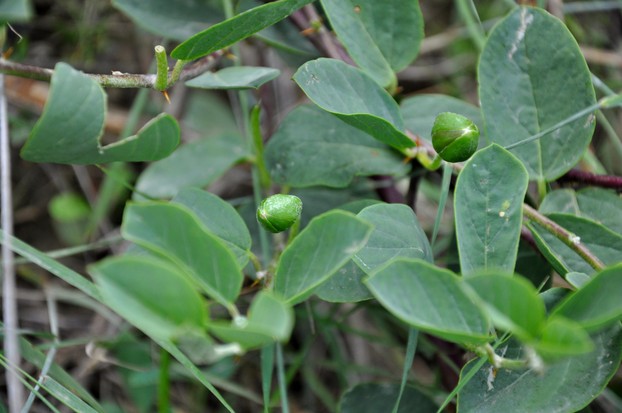
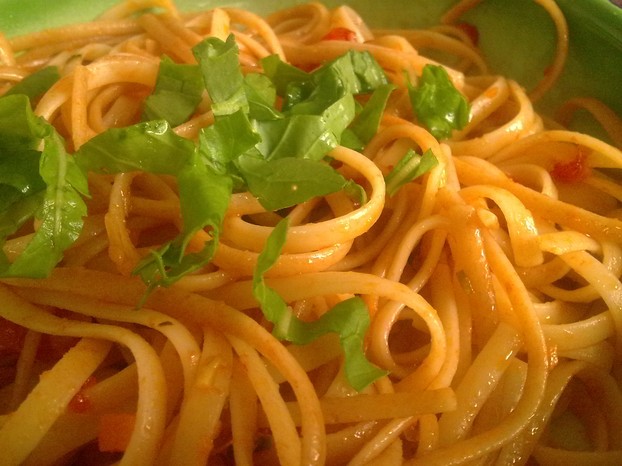
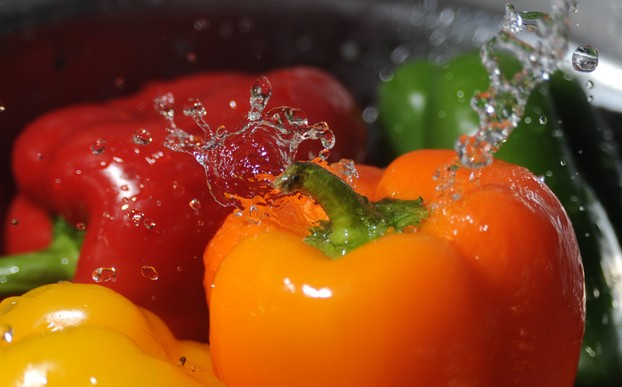

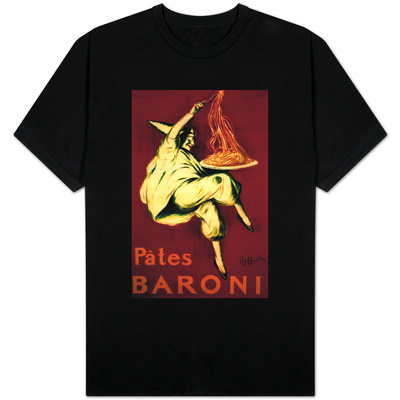


 Are Hawaiian Huakai Po Nightmarchers Avenging Halloween Thursday?on 10/02/2024
Are Hawaiian Huakai Po Nightmarchers Avenging Halloween Thursday?on 10/02/2024
 Mailing Addresses for 2023 Form 4868 Extending 1040 and 1040SR April 15, 2024, Due Dateon 04/15/2024
Mailing Addresses for 2023 Form 4868 Extending 1040 and 1040SR April 15, 2024, Due Dateon 04/15/2024
 Mailing Addresses for 2023 Forms 1040 and 1040SR Filed in 2024on 04/15/2024
Mailing Addresses for 2023 Forms 1040 and 1040SR Filed in 2024on 04/15/2024
 Mailing Addresses for 2022 Form 4868 Extending 1040 and 1040SR April 18, 2023, Due Dateon 04/13/2023
Mailing Addresses for 2022 Form 4868 Extending 1040 and 1040SR April 18, 2023, Due Dateon 04/13/2023

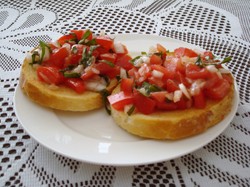
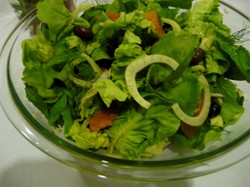
Comments
Mira, "Kalamata" is a word with such a beautiful flow to its pronunciation.
I'm guessing that some of the nutrients in the pasta transfer into the water via osmosis. It's a tradition I follow of never wasting water, especially in cooking. So if there is no other immediate use, I share the water with indoor and outdoor plants. They show appreciation with great vitality, so I keep up the tradition.
I didn't know there was a place called Kalamata -- and what a wonderful etymology, too!
I'm curious about you using pasta water to water plants. What is it in it that helps these plants in any way?:)